Is it French or is it German? Actually Alsace is a bit of both — which is what makes it so intriguing. And so Alsatian!
Alsace was once its own region. But France changed up its regions last year, combining small regions such as Alsace with others to create larger regions. It’s now part of Grand Est which also includes Champagne-Ardenne and Lorraine.
This area is in northeastern France and borders Germany and a bit of Switzerland. Alsace itself is a small sub-region, so easily explored in a few days. But take a bit longer to really savor it as there is a lot to savor here!
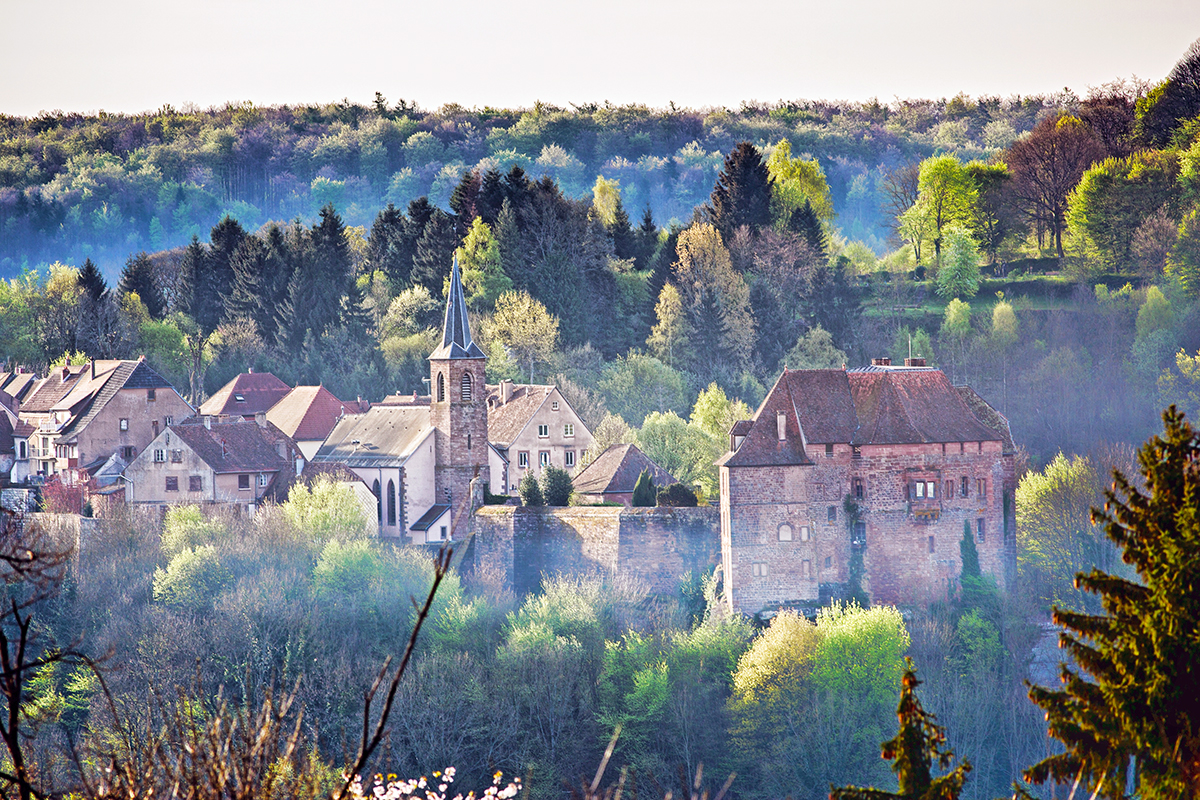
One of the many beautiful villages in Alsace
Alsace was always bouncing back and forth between France and Germany
And, as such, has cultural elements of both.
Here you’ll find brightly colored, steep roofed, half-timbered houses. Decidedly German. Yet Strasbourg’s (the capital of the region) cathedral, Cathédrale Notre-Dame de Strasbourg, is much like Notre Dame in Paris. So decidedly French (in my opinion).
The food is definitely more Germanic in nature with pork and cabbage common. And it’s definitely a great region for beer drinkers. But there’s also incredible wine (we’ll get to that).
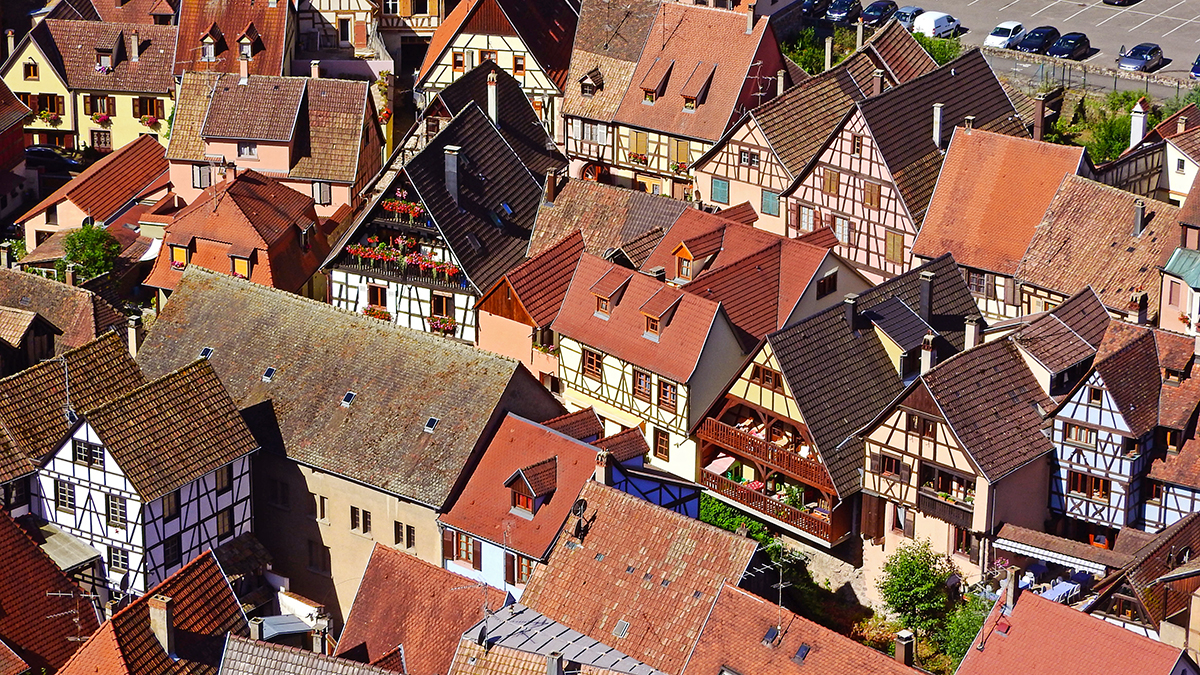
Kaysersberg with its half-timbered houses
Begin in Strasbourg
The capital is definitely worthy of some time. The Cathédrale Notre-Dame de Strasbourg, mentioned above, is a gorgeous Gothic building that has a famous astronomical clock. There’s a vibrant university population and UNESCO old town called Petit France. There are waterways to stroll along as well since the River Ill runs right through the heart of the city.
Many of the other churches and cathedrals around town are worth some time as well. You’ll see their wear and tear as a testament to the wars that seemed to plague this part of Europe.
Strasbourg also happens to be the seat of the Council of Europe, the European Court of Human Rights and the European Parliament. So it has an international flair to it.
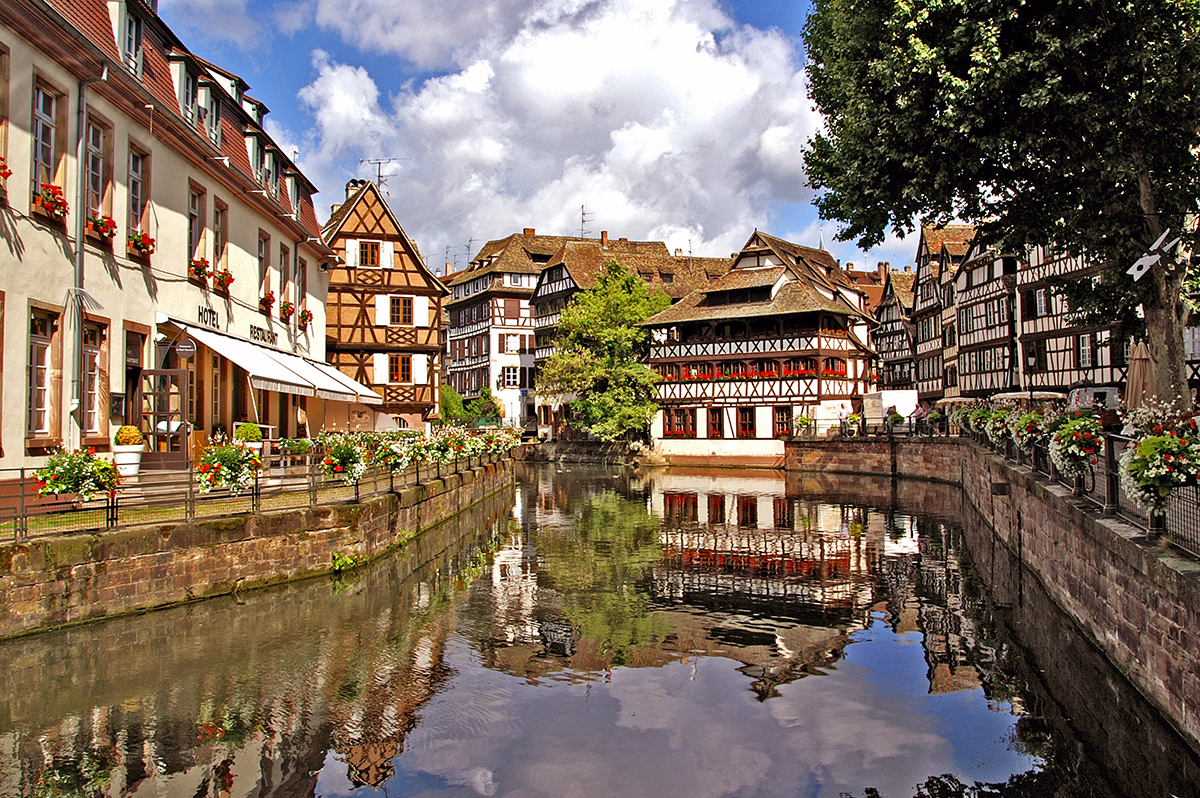
Strasbourg with its half-timbered houses and pretty waterways
The countryside of Alsace
Is no less beautiful with numerous small towns, vineyards, forests and even some mountains in Parc Naturel Régional des Ballons des Vosges. The towns are charming with half-timbered houses and beautiful churches. You’ll find ruins of castles here and there that tell the tales of the conflicts that Alsace has seen over the many years.
Colmar is a must and a wonderful introduction to the towns of the countryside. It’s a sizable town of about 68,000 and crisscrossed by canals. There are half-timbered houses, cobblestone streets and beautiful churches to explore.
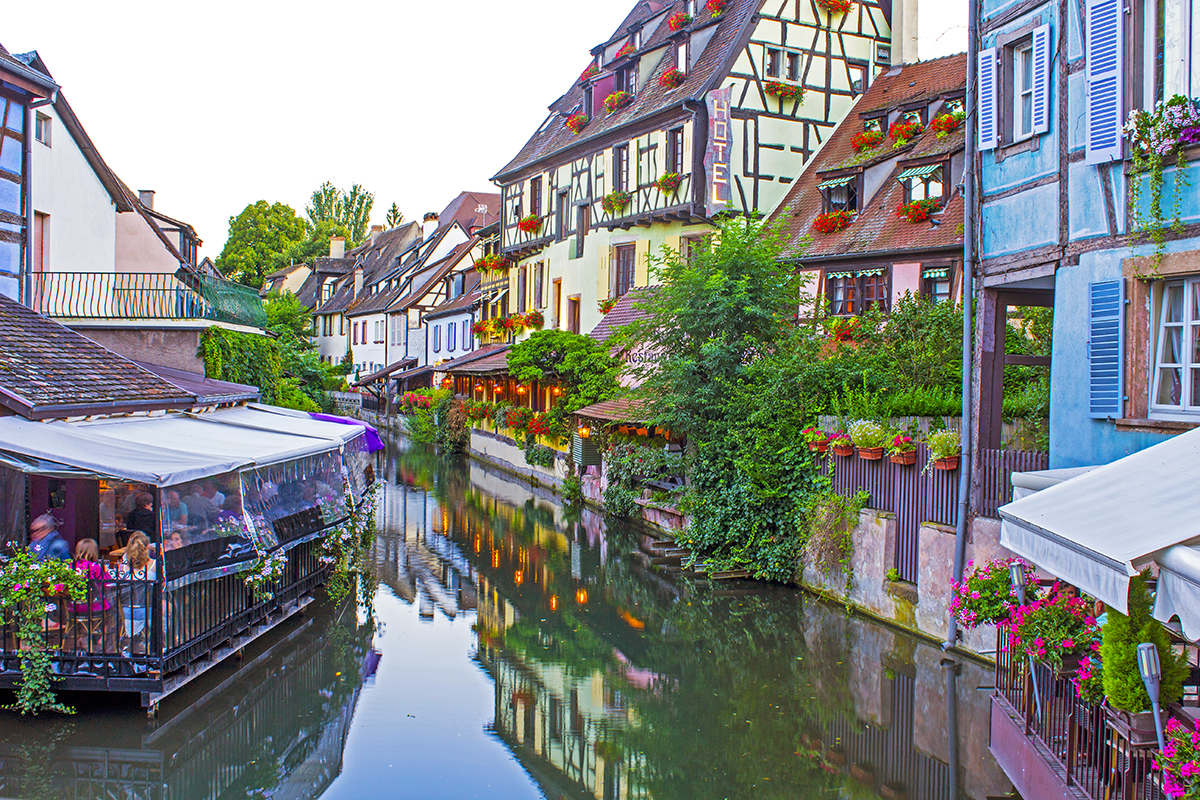
The picturesque town of Colmar, France
The towns just keep getting more and more beautiful. Ribeauvillé, Riquewihr, Dambach-la-Ville, Mittelbergheim, Eguisheim, Hunawihr, Niedermorschwihr, Turckheim, Kaysersberg and Obernai are all towns that look like they’re from a fairytale.
Riquewihr is one place that is at the top of my list. It continues to make the “most beautiful villages of France” list. Half-timbered houses sit behind the defensive walls that are covered with grapevines. But it’s popular so be prepared for crowds — at least during the day. Stay the night and enjoy the quiet.
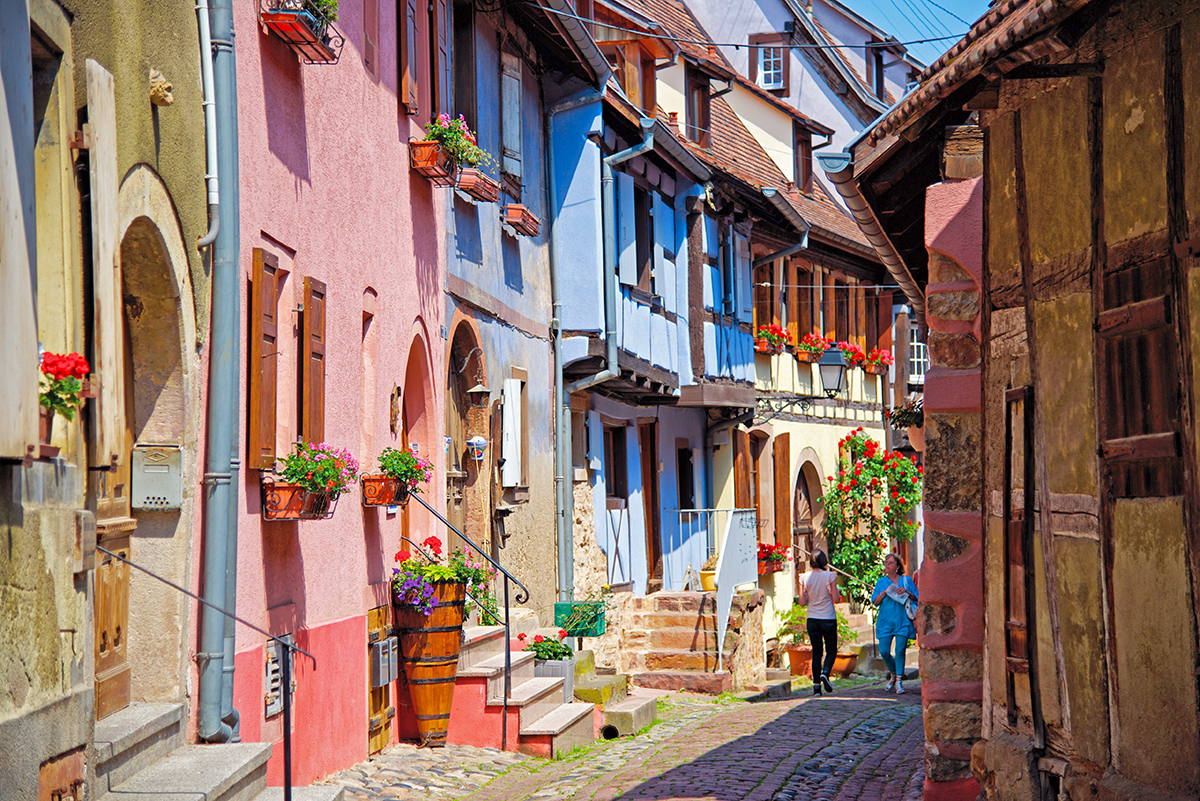
The beautiful town of Riquewihr, France
The Route des Vins
You don’t want to miss the wine route of Alsace.
Not only will you pass through some of the above towns, you’ll be driving (or walking or biking) through the rolling vine-covered hills. And, most importantly, you’ll have the opportunity to taste some incredible wines.
The grapes grown here are mostly white. And they produce some of the best dry Rieslings in the world as well as highly fragrant Gewürztraminer wines.
You’ll also find some tasty Pinot Gris and Muscat wines as well.
And for red, the Pinot Noir grape is the only one grown here, but it will most likely end up as a rosé and not a red wine. The climate in Alsace is simply more conducive to those aromatic white grapes.
Of course, if you want to celebrate then try the bubbly of Alsace, the Crémant d’Alsace. It’s a lovely sparkling wine usually made from Pinot Blanc, Pinot Gris, Pinot Noir, Riesling, Auxerrois or Chardonnay. You may see a Crémant d’Alsace rosé here and there made from Pinot Noir grapes. It’s a bit rare, but rosé sparkling wines are typically quite good.
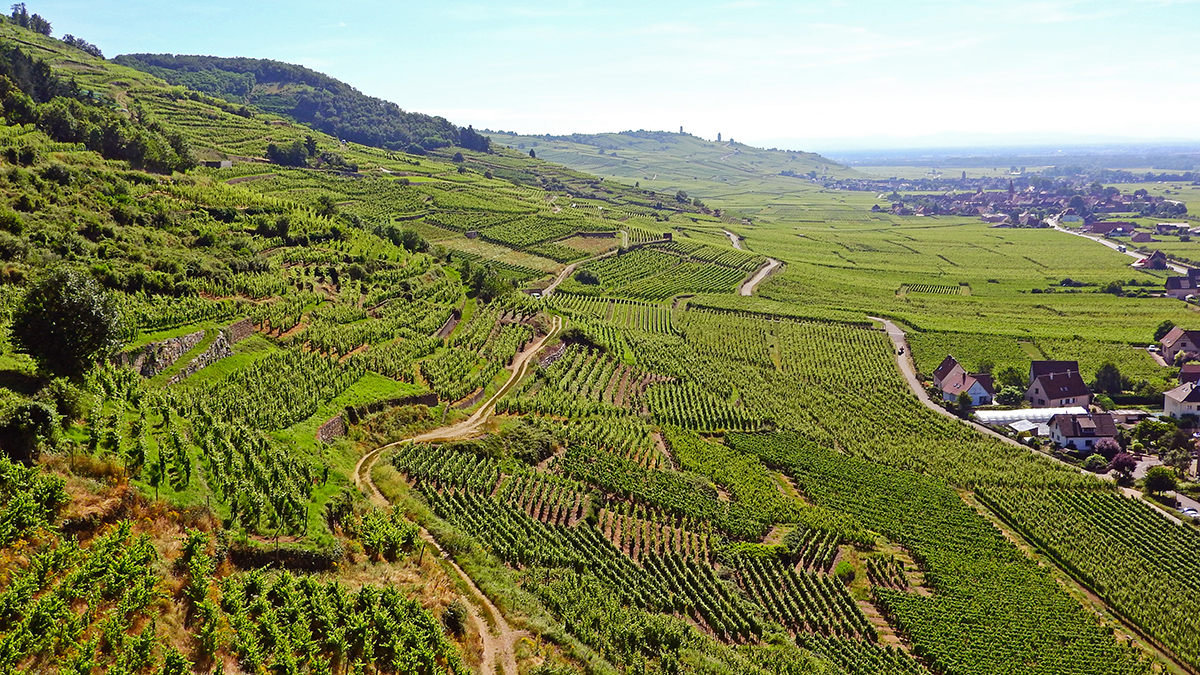
The vineyards of Alsace
And there’s even a Route du Fromage
The Munster Valley is where to begin this route and yes, the town of Munster sits right here in this green valley dotted with cows.
Munster sits just East of Colmar. And yes, this is the Munster of Munster cheese fame. But not the Muenster we get here in the States.
Since true Munster cheese is made with raw (unpasteurized) cow’s milk, it’s illegal in the US. So you simply have to try true Munster cheese while in Alsace. And be sure to pair it with a Gewürztraminer. Remember this is the stinky as hell Munster cheese. But, it’s delicious!
There are lots of little villages dotting the valley that are just as picturesque as those on the wine route, but not as busy.
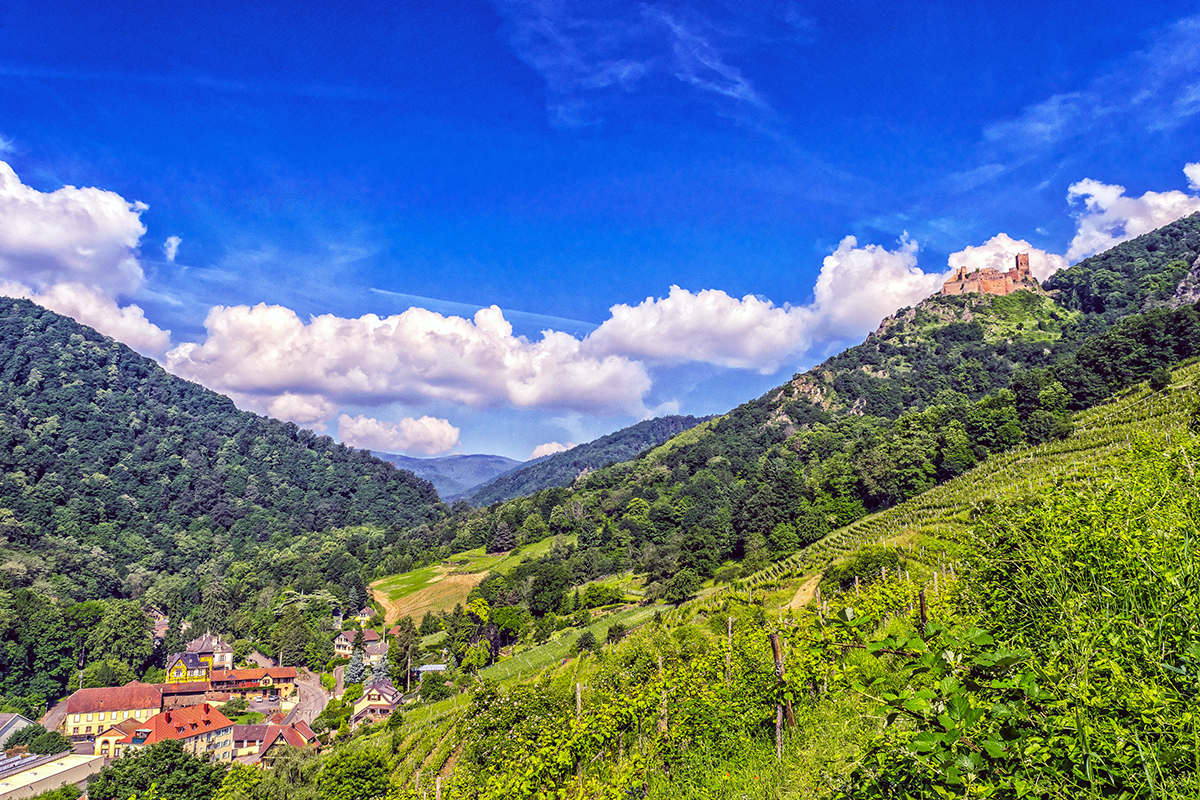
The gorgeous landscape in the Vosges area of Alsace
There’s some beautiful natural scenery
There are 2 parks worth checking out — Parc naturel des Vosges du Nord and Parc Naturel Régional des Ballons des Vosges.
Parc Naturel Vosges du Nord is a protected area of woodland, wetland, farmland and historical sites. It doesn’t contain any mountains of the Vosges, but you will find some foothills.
Parc Naturel Régional des Ballons des Vosges does contain some of the Vosges mountains as well as gorgeous valleys and wooded areas. There are many towns here as well as historical sites. And this park lies right in the Munster Valley so it’s a fabulous place to eat some stinky cheese then go out for a long walk.
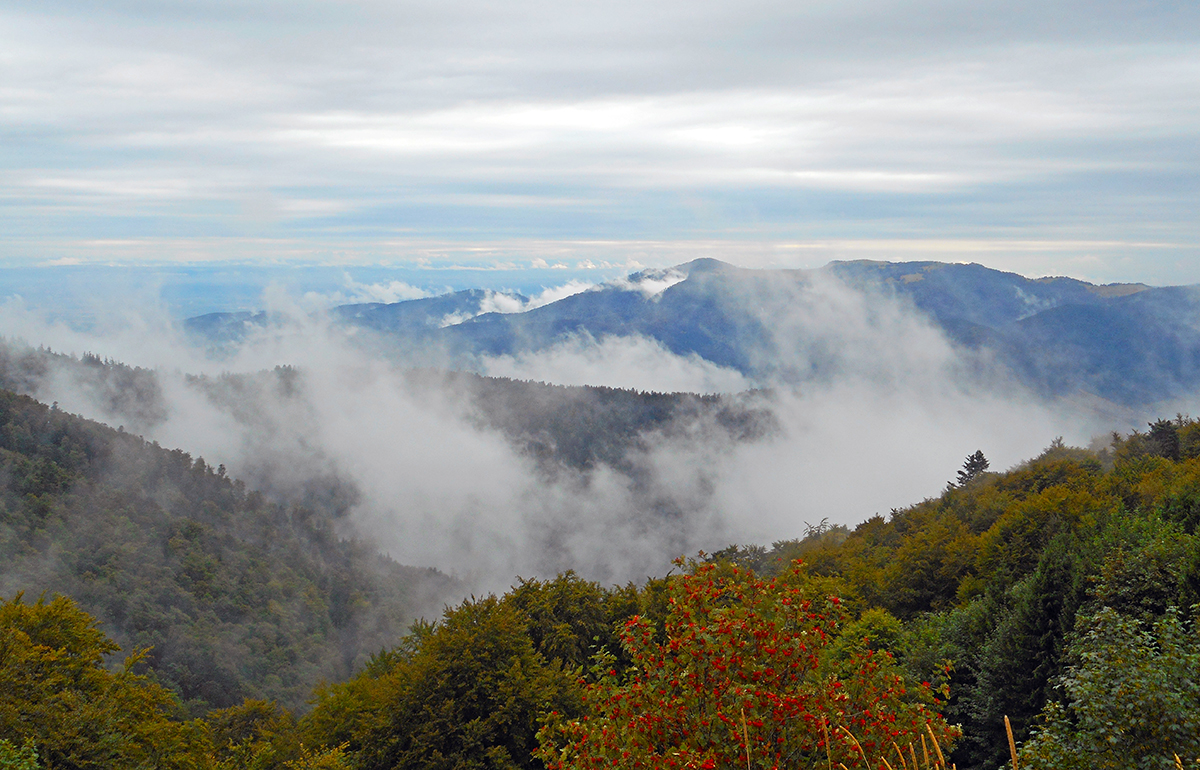
The Grand Balloon in the Vosges Mountains
What do you think of Alsace?
I have to admit that this area has long-held some appeal to me. My great-great grandfather on my mom’s side (through her paternal line) came from this area. So I’ve been interested in it for a while.
But with each passing year, I learn more and more about it. Strasbourg, the wine route, the villages, the Vosges, the Munster valley…it keeps adding up to a place that I feel so drawn to. And it keeps climbing higher on my list.
All photos courtesy of Pixabay.








Wow! Well, this just made our list too 😉